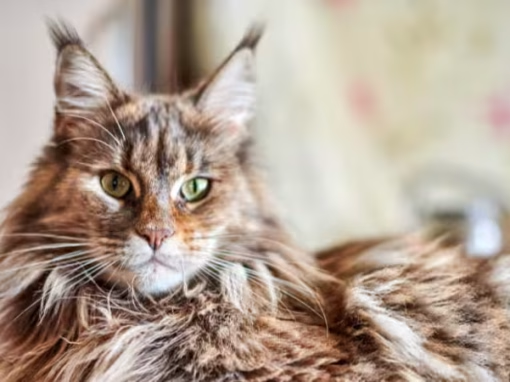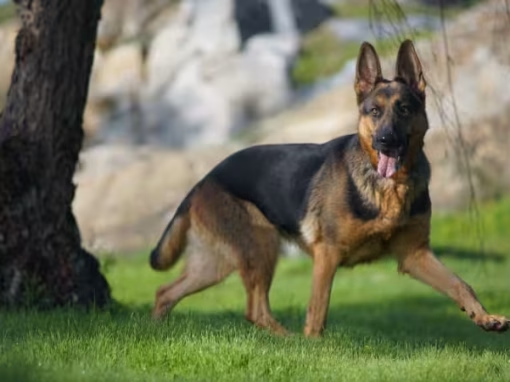The Rhodesian Ridgeback is a distinctive dog breed known for the characteristic ridge of hair along its back, growing in the opposite direction of its coat. Originally bred in Southern Africa to track and confront lions, this powerful and intelligent dog has since become a beloved companion in homes around the world, including South Africa where its roots run deep. Despite its fearsome reputation as a hunter, the Rhodesian Ridgeback is deeply affectionate, loyal, and dignified—a true family dog with a noble spirit.
Table of Contents
Origins and History of the Rhodesian Ridgeback
A Southern African Legacy
The Rhodesian Ridgeback’s lineage can be traced back to the Khoikhoi dogs native to southern Africa, which had a similar ridge pattern. These local dogs were later bred with European breeds brought by Dutch, Portuguese, and German settlers. The resulting hybrid was a resilient, courageous dog capable of surviving harsh African climates and confronting big game.
In the late 19th century, Cornelius van Rooyen, a big-game hunter from what was then Southern Rhodesia (now Zimbabwe), selectively bred these ridge-backed dogs to aid in lion hunting. They were not intended to kill lions but to corner and distract them until hunters could arrive. This unique skill earned them the nickname “African Lion Hound.”
The breed was formally recognised by the Kennel Union of Southern Africa in 1922 and later accepted by international registries such as the American Kennel Club (AKC) and Fédération Cynologique Internationale (FCI).
Appearance and Physical Characteristics
Muscular and Majestic
The Rhodesian Ridgeback is a large and muscular dog with an athletic frame built for stamina and speed. Males typically weigh between 36–41 kg, while females are slightly lighter, ranging from 29–34 kg. Their coat is short, sleek, and comes in shades of light wheaten to red wheaten, often with a black mask or nose.
The most defining trait is the ridge of hair that runs down the spine, formed by hair growing in the opposite direction to the rest of the coat. This feature is both a visual hallmark and a breed standard requirement.
Their expressive eyes—usually round and amber or brown—convey a blend of intelligence, independence, and confidence. The ears are medium-sized, set high, and carried close to the head.
Temperament and Behaviour
Intelligent and Independent
The Rhodesian Ridgeback has a temperament that reflects its hunting origins. They are intelligent and capable of independent thinking, which can sometimes be mistaken for stubbornness. These dogs require confident, experienced owners who can provide consistent training and firm but fair leadership.
While they are naturally protective and alert, they are not known to be aggressive without cause. Their aloofness toward strangers makes them effective watchdogs, though they are not excessive barkers. With their family, Ridgebacks are affectionate, calm, and loyal. They form strong bonds and are often good with children if socialised early and handled respectfully.
Social and Territorial Instincts
Ridgebacks can be territorial, especially with other dogs of the same sex. Early socialisation with a variety of animals, people, and environments is crucial to ensure a well-rounded adult dog. Their strong prey drive means they may chase small animals, so secure fencing and supervision are necessary.
Exercise and Activity Needs
Energy to Burn
Given their athleticism and working heritage, Rhodesian Ridgebacks require ample physical and mental stimulation. Daily walks, free play in a secure area, and activities such as running, hiking, or even canine sports will keep them healthy and well-behaved.
Lack of adequate exercise can lead to destructive behaviour, restlessness, and even depression. They are not suited to a sedentary lifestyle or apartment living unless they are exercised thoroughly and frequently.
Training and Intelligence
Responsive Yet Independent
Training a Rhodesian Ridgeback can be rewarding for those who understand the breed’s temperament. They respond best to positive reinforcement techniques, consistency, and early obedience classes. Harsh or punitive methods will not yield good results and may damage the trust between dog and owner.
Because of their independent streak, Ridgebacks may test boundaries. They do best with confident trainers who can establish clear expectations. Early recall training is particularly important due to their hunting instincts.
Health and Lifespan
Robust With Breed-Specific Risks
The Rhodesian Ridgeback is generally a healthy and robust breed with a lifespan of around 10 to 12 years. However, like many purebred dogs, they are susceptible to certain genetic conditions. These include:
- Hip and elbow dysplasia, which can lead to arthritis and mobility issues.
- Dermoid sinus, a congenital skin defect associated with the ridge trait, which may require surgical correction.
- Hypothyroidism, leading to weight gain, lethargy, and coat issues.
- Bloat (gastric dilatation-volvulus), a life-threatening condition common in deep-chested breeds.
Routine veterinary care, responsible breeding practices, and early health screening can mitigate many of these risks. Owners should consult reputable breeders who test for common health issues and maintain ethical breeding standards.
Grooming and Coat Care
Low Maintenance but Not No Maintenance
One of the many appealing aspects of the Rhodesian Ridgeback is its low-maintenance coat. Their short fur requires only occasional brushing to remove loose hair and maintain shine. They are relatively clean dogs with minimal odour and infrequent bathing needs.
However, routine grooming should include regular checks of the ears, teeth, nails, and skin. Ear cleaning is important to prevent infections, particularly in South Africa’s dusty environments. Nail trimming should be done regularly to avoid overgrowth, which can affect gait and comfort.
Feeding and Nutrition
Balanced Diet for an Active Dog
Feeding a Rhodesian Ridgeback requires careful attention to portion control and nutritional balance. These dogs thrive on high-quality, protein-rich food suited to their age, size, and activity level. Overfeeding can lead to obesity, especially if the dog is not exercised adequately.
Puppies should be given food that supports healthy bone and joint development, while adult dogs may require diets tailored for active or large breeds. Access to clean water and feeding on a consistent schedule can help with digestion and routine.
Is the Rhodesian Ridgeback the Right Dog for You?
Matching Lifestyle With Temperament
The Rhodesian Ridgeback is not a breed for everyone. They need owners who appreciate their intelligence, physical needs, and independent nature. Ideal homes include active individuals or families with space to accommodate their energy and curiosity.
They are best suited to environments where they can thrive both physically and mentally, and where owners are committed to socialising and training from an early age. With the right structure and care, a Rhodesian Ridgeback is a loyal, graceful, and protective addition to any household.



